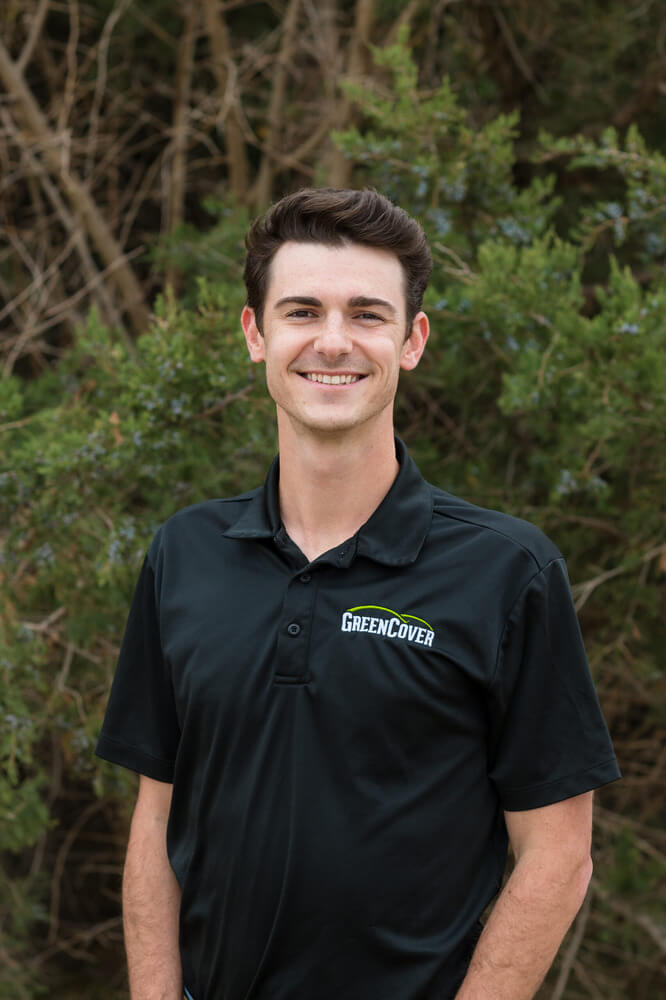Over the last couple of years, we have started to write about the concept of overseeding cool season perennial pasture (like fescue and bromegrass) with warm season annuals during the summer slump. This year we continue that trend with a story from south central Missouri.
Michael Detweiler of Koshkonong, MO is an experienced multi-species livestock manager. In order to succeed in that profession, in that location, it requires him to also be a great manager of fescue grass, as that is what dominates the landscape. Having seen Michael’s pastures, there is also a decent amount of some other clovers and broadleaves but they are mostly all cool season species. This provides ample forage in spring and respectable regrowth in the fall if rested during the “summer slump” and not overgrazed late spring/early summer. However during the “summer slump” months (end of June – beginning of September), the fescue pastures often provide limited low-energy forage.
Michael recently began a program of interseeding annual cover crop species into his pasture. His primary goal was to give the soil a spark through added diversity of roots and root exudates which would feed the soil biology and hopefully increase the future production of his existing pasture species. Naturally, this would also bring about added biomass that could be grazed.
Michael began his interseeding with a cool season mix in the late fall of 2021. Winter peas, crimson clover, black oats, cereal rye, and wheat made up the mix. While a good representation of peas, clover and rye could be seen the next spring, the resident fescue was still dominant, as expected, preventing much of a showing from the later maturing oats and wheat. Adequate spring rains provided lush pastures for his adaptive grazing program. Then came the summer slump…
Fescue naturally goes semi-dormant as the summer heat exceeds 85 degrees F. With sufficient rains or irrigation, fescue can continue growing but it is much less efficient. On the other hand, warm season species love temperatures between 80-95 degrees F and can produce significant biomass during this period. On paper, it just makes sense to plant these when a cool season pasture is dormant. There are challenges, however.
One of the main challenges of planting warm season annuals into a cool season perennial pasture is competition. Even though the fescue may be semi-dormant, it still has a well established root system. Also, it may be classified as a bunchgrass but it is known for its ability to spread and take over, meaning it still forms a sod allowing little room for other plants. To combat these challenges, there are several things that must be done right:
- Seed to soil contact: This is always important when planting any kind of seed, but in this especially competitive scenario, it becomes even more crucial. Michael planted his mix with a no-till drill at a depth of about ¾”.
- Knock the existing pasture back hard: Fescue is an extremely tough and resilient plant and to allow the warm season species to come up, the fescue must be “put on its heels.” Some people will do this by one really hard graze, leaving only a short stubble height left; or for even better results, do a hard graze, allow some regrowth, and then graze it again hard. Michael did the latter.
- Timing: Don’ plant too early and not too late. The fescue must be inactive before planting the warm season mix. If the fescue is still growing, the annual seed will waste its precious stored energy competing against something it cannot beat and then it has no energy left for when conditions are right. Planting too late is mostly a problem of missing out. As long as the mix is planted before the fescue resumes growth in the fall, the annuals should grow but perhaps not as much as if they were planted sooner. Find the sweet spot.
A producer has the ability to control these three factors, and if managed correctly, one has a good chance of success, barring one other element – moisture.
Fortunately, Michael has some pastures with irrigation potential. He used a hose reel and sprinklers to irrigate what he could and these paddocks responded accordingly.
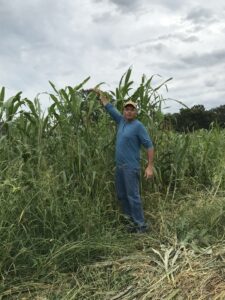
This irrigated warm season mix of sorghum sudan, pearl millet, and sunn hemp all reached about 6 feet or more, and provided many tons of valuable late summer and early fall grazing.
Of course, many pastures do not have irrigation and on these fields, Michael had to rely on the rain. The problem was that the rain shut off the week after Memorial Day, which was before some of the fields were planted, and it remained bone dry until mid-August. The rocky soils of the Ozarks exacerbated the drought. It seemed like any paddocks that were not irrigated were going to be a bust. However, the rain eventually did come and there was still enough summer heat to keep the fescue dormant and let the summer annuals take off.
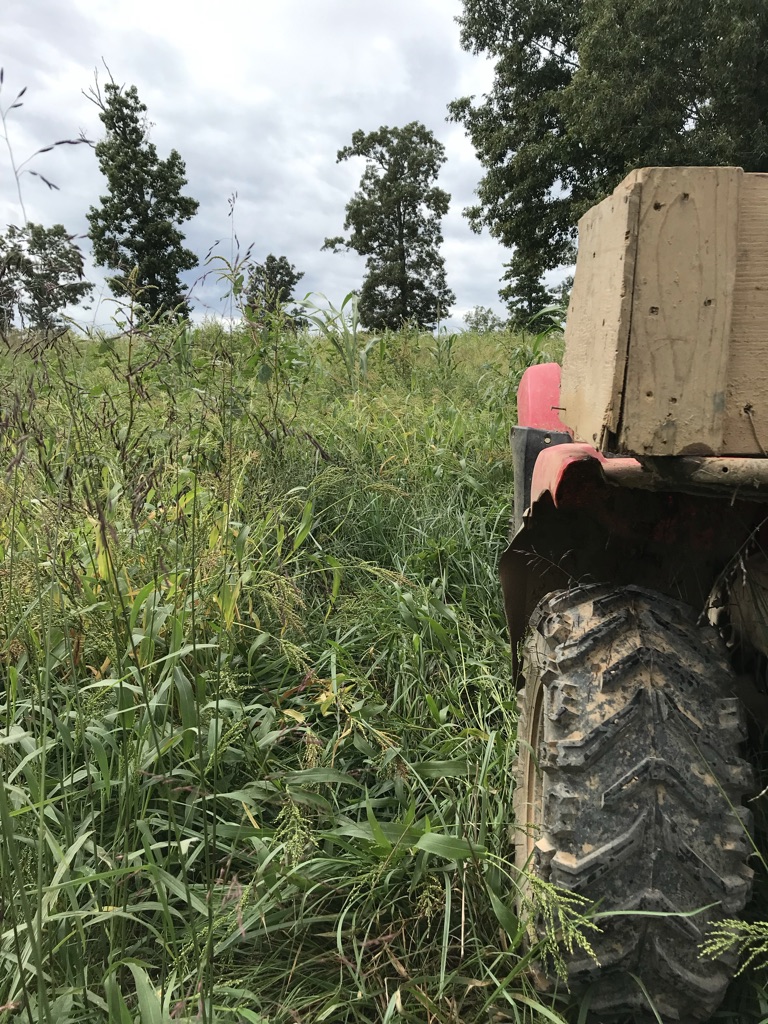
Browntop millet was one of the species that did especially well once the late rain came. Collards also came in thick providing extra forage deep into the fall even after everything else froze out.
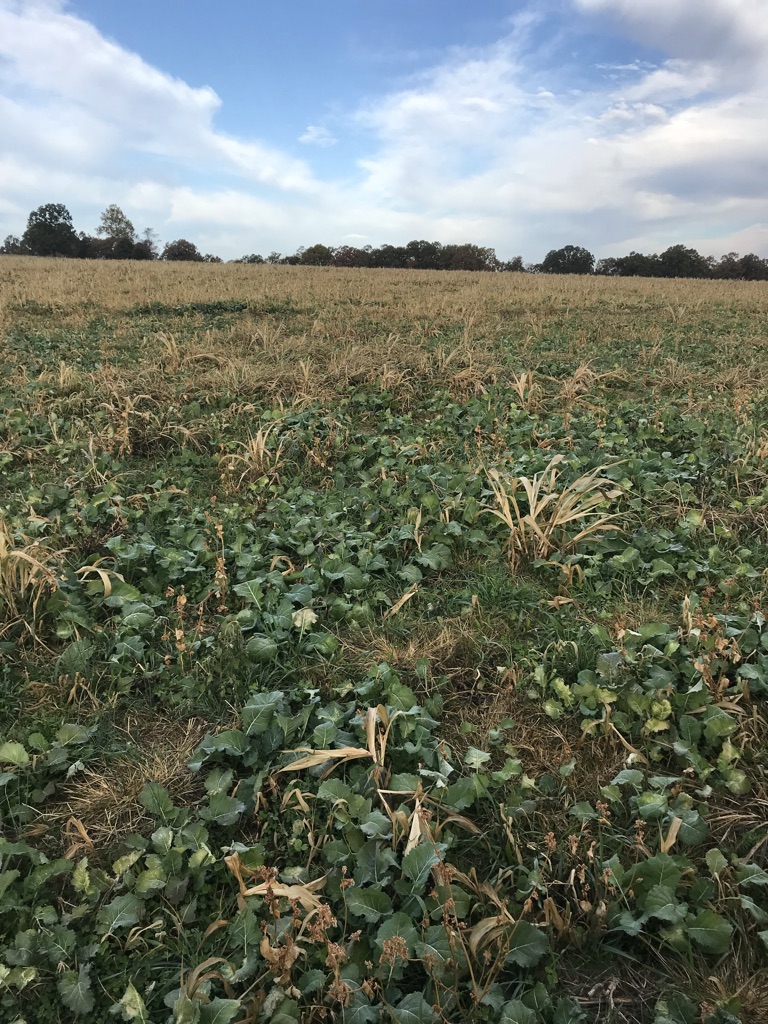 The summer slump was filled! Abundant forage was produced in a season when the pastures would have normally sat idle. Above ground livestock were fed and the below ground livestock (microbes) feasted as well. There were two comments Michael made that highlighted the success of this project:
The summer slump was filled! Abundant forage was produced in a season when the pastures would have normally sat idle. Above ground livestock were fed and the below ground livestock (microbes) feasted as well. There were two comments Michael made that highlighted the success of this project:
- “We would have had to feed a lot of hay this summer and fall (many of the neighbors did) if we had not done this. We were able to reach mid-December before we had to feed hay to our large herds of water buffalo and cattle which with our dry conditions I count as a huge win!”
- “There’s something to the diversity aspect. We tried overseeding single species in the pastures before with minimal success. There’s something about having so many species that just works. It’s what the soil wants, and what the herds above and below the soil want too.”
This fall, another cool season mix was interseeded including vetch, red clover, cereal rye, triticale, perennial ryegrass, and plantain. Michael won’t always need to overseed a cool season mix. With a couple added perennials this year and a fast improving pasture, his spring and fall production will be taken care of, but for the foreseeable future, he plans to continue with a warm season overseeding.
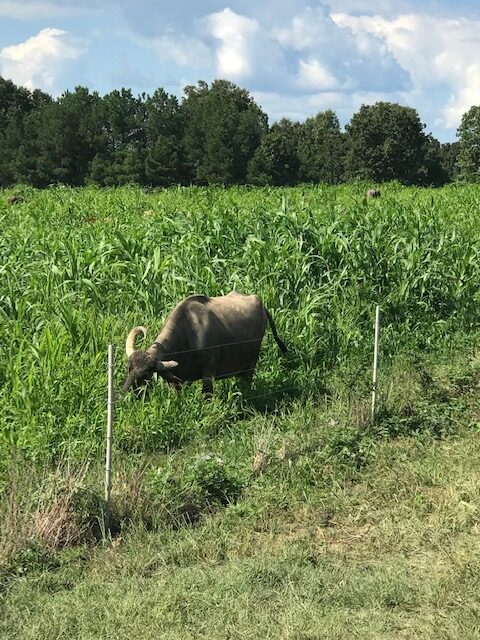
Yes, that really is a water buffalo! The herd Michael manages is one of the largest water buffalo herds in the US. The animal is grazing a non-irrigated paddock on September 7th. There are others from the herd in the background of this picture but they are mostly covered up from the 5-foot-tall forage!
This article first appeared in the 9th Edition of Green Cover's Soil Health Resource Guide.
Also check out the 10th edition, our latest Soil Health Resource Guide, over 90 pages packed with scientific articles and fascinating stories from soil health experts, researchers, farmers, innovators, and more! All as our complimentary gift to you, a fellow soil health enthusiast!
